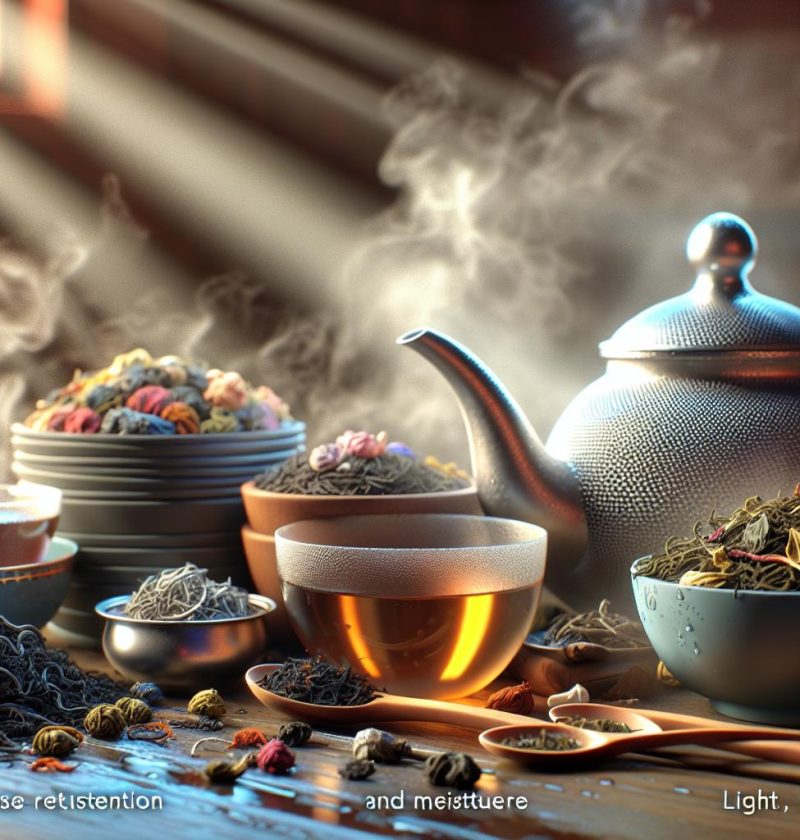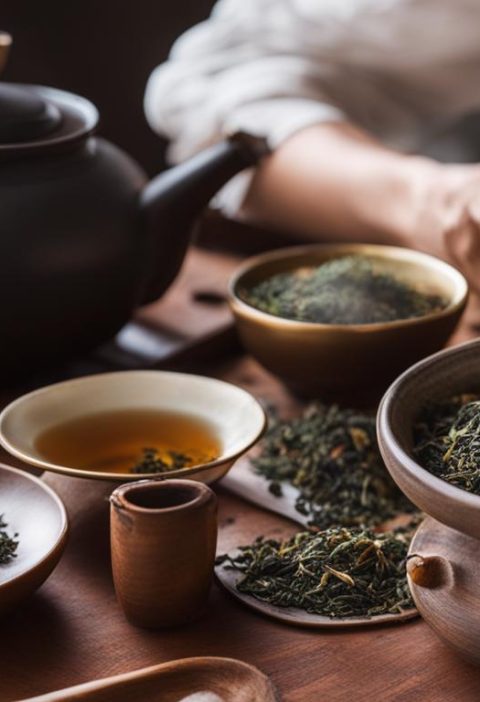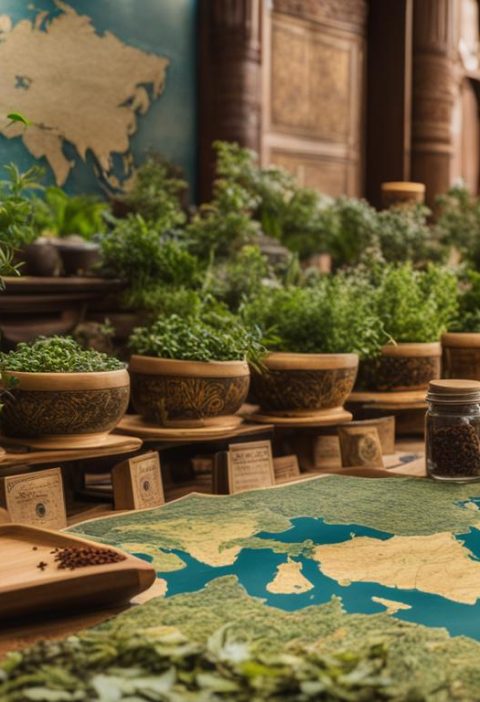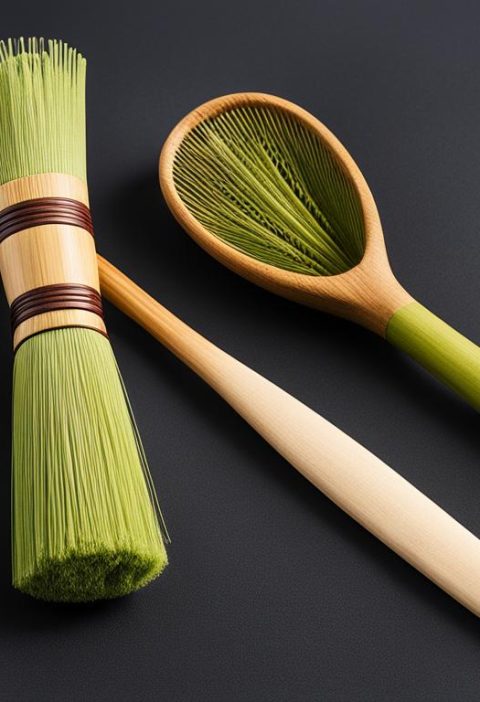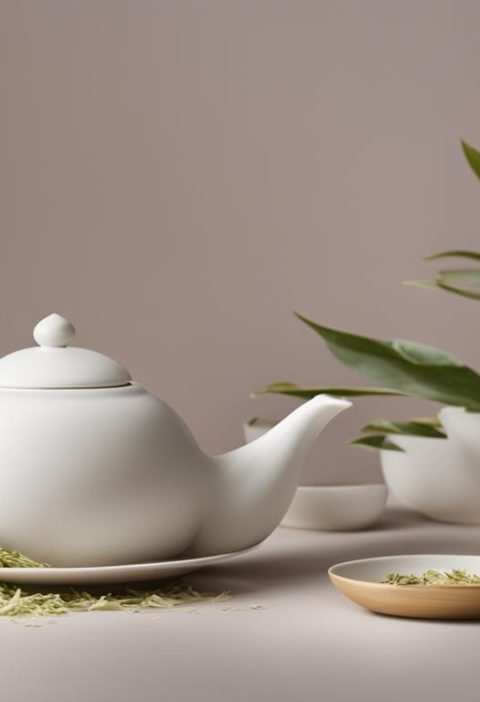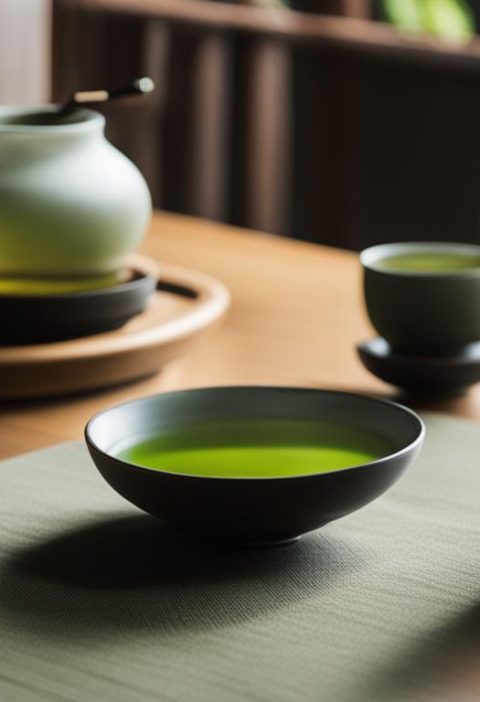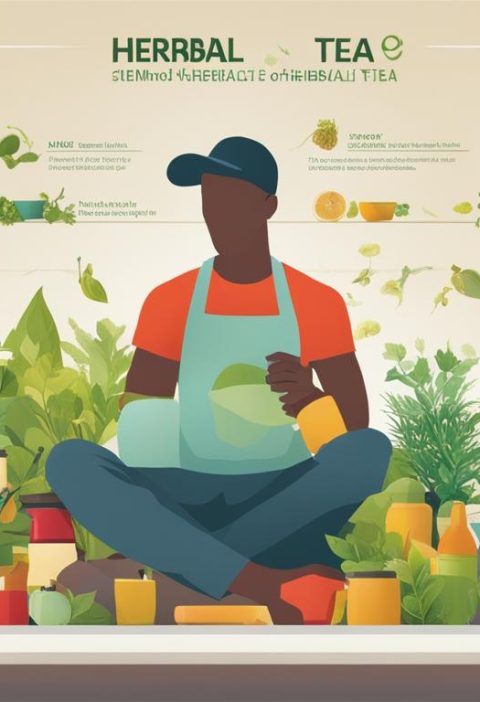So, you’re diving into the world of tea – a journey filled with aromatic blends and soothing sips. As we embark on this flavorful adventure, it’s crucial to grasp the art of tea storage and steeping. Proper storage ensures that our teas remain fresh and full of flavor, ready to elevate our tea-drinking experience to new heights. And when it comes to steeping, the right technique can unlock a world of nuanced tastes and aromas in every cup we brew.
Tea storage may seem simple, but there are key factors to consider to preserve the quality of our teas. From selecting the right containers to understanding the impact of light and moisture, we’ll uncover the secrets to keeping our teas at their best. When it comes to steeping, mastering the art of time and temperature is essential. With our beginner-friendly tips and tricks, we’ll learn how to brew the perfect cup of tea, tailored to our preferences and delighting our taste buds with each sip.
Why Proper Tea Storage is Essential
To ensure the longevity and quality of our tea, it is crucial to pay attention to proper tea storage. Here’s why it’s essential:
For Beginners: Getting Started Right
- Select the right container: Opt for airtight containers to protect tea from air, light, and moisture.
- Avoid heat and light: Store tea away from direct sunlight and sources of heat to maintain its freshness.
- Keep it away from strong odors: Tea easily absorbs odors, so store it away from strong-smelling items in your kitchen.
For Intermediate Tea Enthusiasts: Enhancing Preservation
- Utilize opaque containers: Opaque containers help shield tea from light exposure, preserving its flavors.
- Consider humidity levels: Maintain moderate humidity levels where tea is stored to prevent it from becoming stale.
- Rotate your tea stock: Consume older teas first to ensure you enjoy them at their best flavor.
- Vacuum-seal storage: Vacuum-sealing can extend the freshness of tea by removing excess air.
- Invest in tea-specific storage: Tea canisters with airtight seals are ideal for storing various types of tea.
- Monitor temperature: Store tea in a cool, dry place with consistent temperatures to prevent degradation.
Remember, storing tea properly not only maintains its quality but also enhances the overall tea-drinking experience. Explore different storage methods based on your expertise level to savor the true essence of every brew.
Factors to Consider in Tea Storage

When it comes to proper tea storage, there are several key factors that tea enthusiasts should consider to preserve the quality and flavor of their beloved brews. Whether you’re a beginner looking to embark on your tea storage journey or an intermediate tea connoisseur aiming to take your storage game to the next level, these tips will help you make the most of your tea storage experience.
For Beginners: Essential Tea Storage Tips
- Selecting the Right Container: Opt for airtight containers to keep your tea fresh and protect it from exposure to moisture and air.
- Avoiding Heat and Light: Store your tea in a cool, dark place away from direct sunlight and heat sources to maintain its flavor and aroma.
- Keeping Tea Away from Strong Odors: Prevent your tea from absorbing unwanted odors by storing it away from strong-smelling foods or spices.
- Opting for Opaque Containers: Use opaque containers to shield your tea from light exposure, which can degrade its quality over time.
- Monitoring Humidity Levels: Keep an eye on humidity levels in your storage area to ensure your tea remains dry and free from moisture.
- Rotating Tea Stock: Rotate your tea supplies regularly to ensure older teas are consumed first and fresher ones are stored for later enjoyment.
- Investing in Tea-Specific Storage: Consider investing in tea-specific storage solutions such as tea tins or canisters designed to preserve tea freshness.
- Maintaining Consistent Temperatures: Store your tea in an area with a consistent temperature to prevent fluctuations that can impact its quality.
By incorporating these tea storage tips into your routine, you can elevate your tea-drinking experience and savor the nuanced flavors of each brew without compromise.
Selecting the Right Containers for Tea Storage
When it comes to storing tea, choosing the right containers is crucial to maintaining its freshness and flavor. Whether you’re just starting your tea journey or looking to enhance your storage setup, here are our recommendations tailored to different experience levels:
For Beginners: Essential Guidelines
- Airtight Containers: Opt for containers that seal tightly to prevent air exposure.
- Material Matters: Choose glass, ceramic, or stainless steel containers for durability.
- Avoid Light Exposure: Select opaque containers or store tea in a dark place.
- Size Consideration: Use containers that fit the quantity of tea you typically store.
For Intermediate Enthusiasts: Elevating Your Storage Game
- Temperature Control: Consider containers that offer insulation to maintain consistent temperatures.
- Moisture Monitoring: Look for containers with humidity gauges to regulate moisture levels.
- Rotate Your Stock: Use older tea leaves first to ensure freshness in your collection.
- Invest Wisely: Explore specialized tea storage solutions for added protection.
- Stay Odor-Free: Keep tea away from strong-smelling items to preserve its delicate aroma.
- Vacuum Sealing: Use vacuum-sealed containers to extend the shelf life of tea.
- Temperature Precision: Invest in temperature-controlled storage options for premium teas.
- Tea-Specific Solutions: Consider tea tins, canisters, or caddies designed for different tea types.
- Scent-Sensitive: Opt for containers made of neutral materials to avoid any scent transfer.
- Labeling System: Maintain organization with labels specifying tea types, dates, and brewing instructions.
By selecting the right containers based on your expertise level, you can ensure that your tea remains fresh, flavorful, and ready to brew whenever you crave a cup.
The Impact of Light and Moisture on Tea Freshness
When it comes to tea storage, understanding the impact of light and moisture is crucial in maintaining the freshness and flavors of your beloved leaves. Let’s delve into how these factors can affect your tea and what you can do to preserve its quality.
For Beginners: Setting the Foundation
- Light Exposure: Even though it may seem harmless, light can degrade the quality of your tea by accelerating the oxidation process. Store your tea in opaque containers away from direct sunlight.
- Moisture Control: Moisture is another culprit that can lead to mold or spoilage. Opt for airtight containers to keep your tea dry and fresh.
For Intermediate Enthusiasts: Fine-Tuning Technique
- Humidity Levels: Monitor the humidity in your storage area to ensure it stays around 60-70%, ideal for tea preservation.
- Temperature Regulation: Maintain a consistent cool temperature to prevent heat fluctuations that can harm the tea leaves.
- Rotation Routine: Keep your tea selection fresh by rotating your stock regularly, using older teas before moving on to newer ones.
- Specialized Containers: Consider investing in tea-specific containers that offer features like humidity controls to prolong freshness.
- Vacuum Sealing: Utilize vacuum-sealed bags to remove excess air and maintain the tea’s integrity for longer periods.
- Labeling System: Implement a detailed labeling system to track tea types, purchase dates, and brewing recommendations for an organized storage approach.
Understanding and mitigating the impact of light and moisture on your tea can elevate your brewing experience, ensuring each cup is a delightful sip of freshness and flavor.
Mastering the Art of Steeping
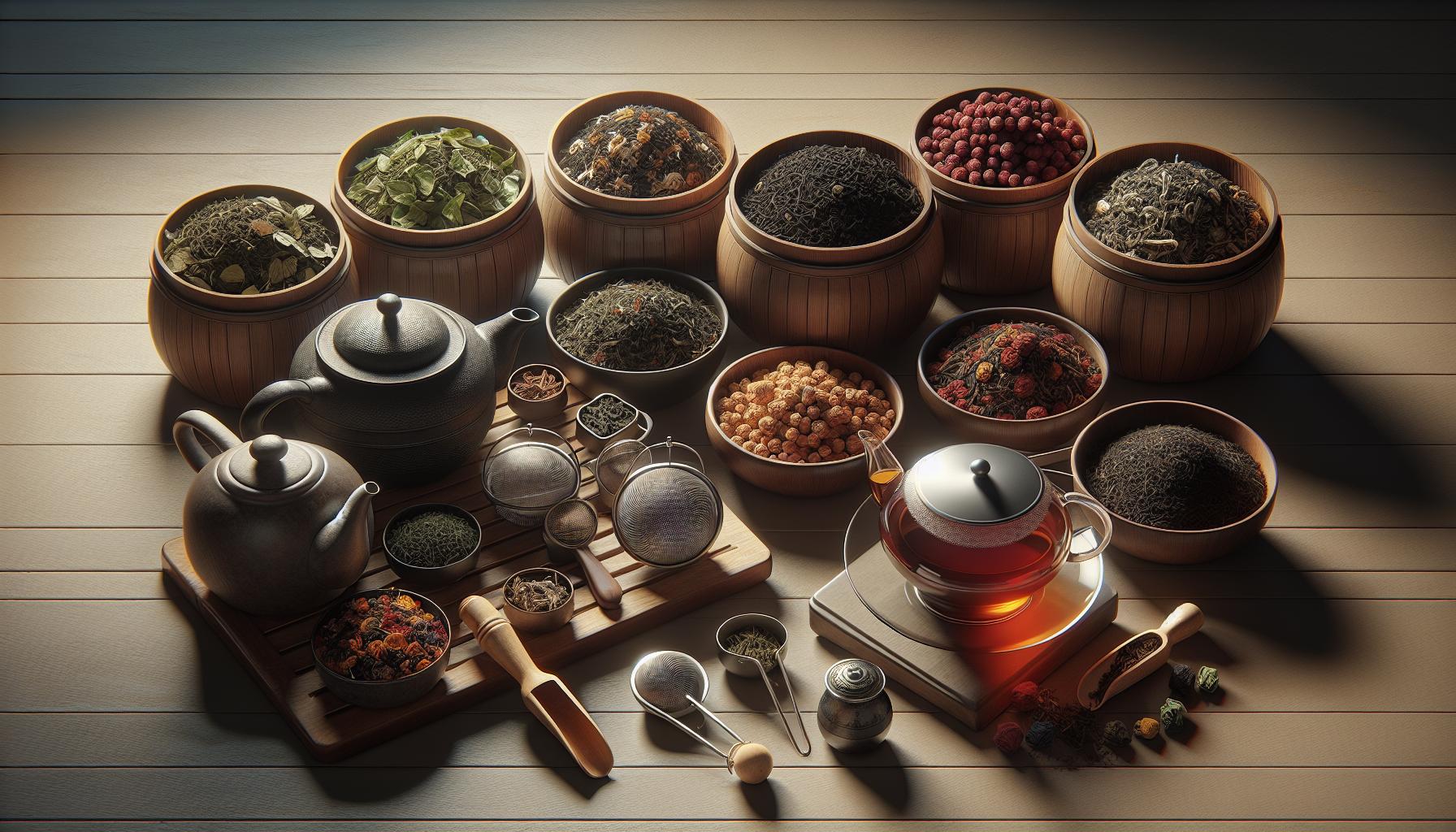
For Beginners: Getting Started with Steeping
- Choose the Right Tea: Start with loose leaf teas like Green tea or Black tea.
- Water Temperature: Use 90°C (194°F) for Green tea and 100°C (212°F) for Black tea.
- Steeping Time: 2-3 minutes for Green tea, 3-5 minutes for Black tea.
For Intermediate Enthusiasts: Fine-Tuning Your Brew
- Explore Different Tea Varieties: Try Oolong tea or White tea for diverse flavors.
- Experiment with Infusion Time: Adjust steeping time based on personal preference.
- Use Quality Water: Opt for filtered water for a cleaner taste.
- Consider Tea Ware: Invest in a Gaiwan or Yixing teapot for traditional brewing.
- Master the Gongfu Cha Method: Experiment with multiple short infusions for richer flavors.
- Try Rare Teas: Experience exquisite flavors with Pu-erh tea or Jasmine pearls.
| Key Points | Details |
|---|---|
| Tea Types | Green tea, Black tea, Oolong tea, White tea, Pu-erh tea, Jasmine pearls |
| Optimal Water Temperature | Green tea: 90°C (194°F), Black tea: 100°C (212°F) |
| Steeping Time | Green tea: 2-3 minutes, Black tea: 3-5 minutes |
Conclusion
Now that we’ve covered the essentials of tea storage and steeping, we can confidently navigate the world of tea with finesse. By understanding the impact of light and moisture on tea quality, we can ensure our teas remain fresh and flavorful. Whether you’re a beginner starting with Green or Black tea or an intermediate enthusiast exploring rare varieties, mastering the art of steeping is key. Remember to adjust infusion times, use quality water, and experiment with different tea ware to elevate your tea experience. With our newfound knowledge of optimal temperatures and steeping times, we’re equipped to brew the perfect cup of tea every time. Let’s savor each sip and continue our tea journey with curiosity and passion.
